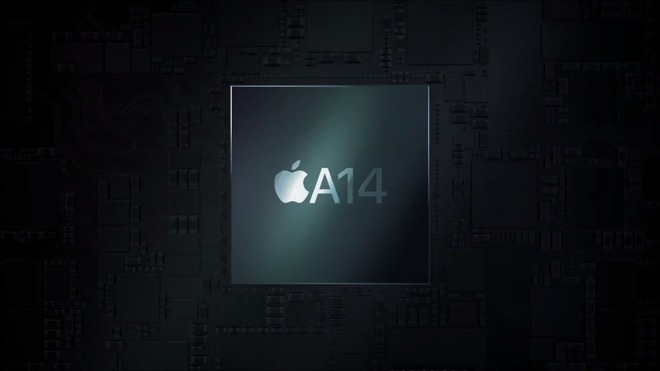In an interview published on the eve of Apple's "iPhone 12" launch event, Apple VP of platform architecture Tim Millet has explained some of the work that went into the A14 Bionic system-on-chip, and what it means for the future of Apple's chip designs.

Revealed in the iPad Air launch during Apple's first special event, the A14 is widely anticipated to make an appearance during Tuesday's "Hi, Speed" event, where Apple is expected to unveil its 2020 iPhone lineup. Millet offered more details about the A14's design and creation.
Made using a 5-nanometer process, the A14 packs in 11.8 billion transistors onto the chip, up from the 8.5 billion of the A13, with the changes enabling Apple to be more precise in how it uses the chip to shape the user's experience.
"One of the ways chip architects think about features is not necessarily directly mapping [transistors] to a user feature in the product so much as enabling the underlying technology, like software in the graphics stack to be able to leverage a new capability in the GPU, said Millet to Engadget. "That will inevitably come as a visual feature in a game, or in a snappy transition in the user interface."
The expansion of the Neural Engine to 16 cores instead of 8 cores brought up the question of why Apple elected to devote transistors there and not budgeted for more GPU or CPU performance, which Millet suggests is down to how Apple views the feature.
"We saw the opportunity to do things that would have been impossible to do with a conventional CPU set," he explained. "You could in theory do many of the things the Neural Engine does on a GPU, but you can't do it inside of a tight, thermally-constrained enclosure."
Apple also had to balance power and energy efficiency, on which Millet says Apple erred towards efficiency, since it "applies to every product that we build." By working on making chips power efficient as a focus, it doesn't need to work on making the same chips efficient in different ways for an iPhone over an iPad.
Turning to its future of chip designs, Apple is keen to build and reuse its ideas. "Ultimately, we want to make sure that when we build a CPU for one generation, we're not building it necessarily for one," advised Millet.
An example of this is in the X and Z versions of the same chips that are used in the iPad Pro lines, as they are fundamentally tweaked and added-to variants of existing chip designs. Apple also builds to make the chip architecture "parameterized," making it potentially scalable to other hardware, like an Apple Watch.
One potential upcoming example of this would be Macs with Apple Silicon, with the first public launch of a Mac using the chips expected before the end of 2020. Developer kits used a Mac mini equipped with an A-series chip, which suggests the same chip designs may be in use for that product line.
In another interview from October 5, Millet discussed the progression of machine learning, including the closeness of working with Apple's software team and the importance of Core ML.


